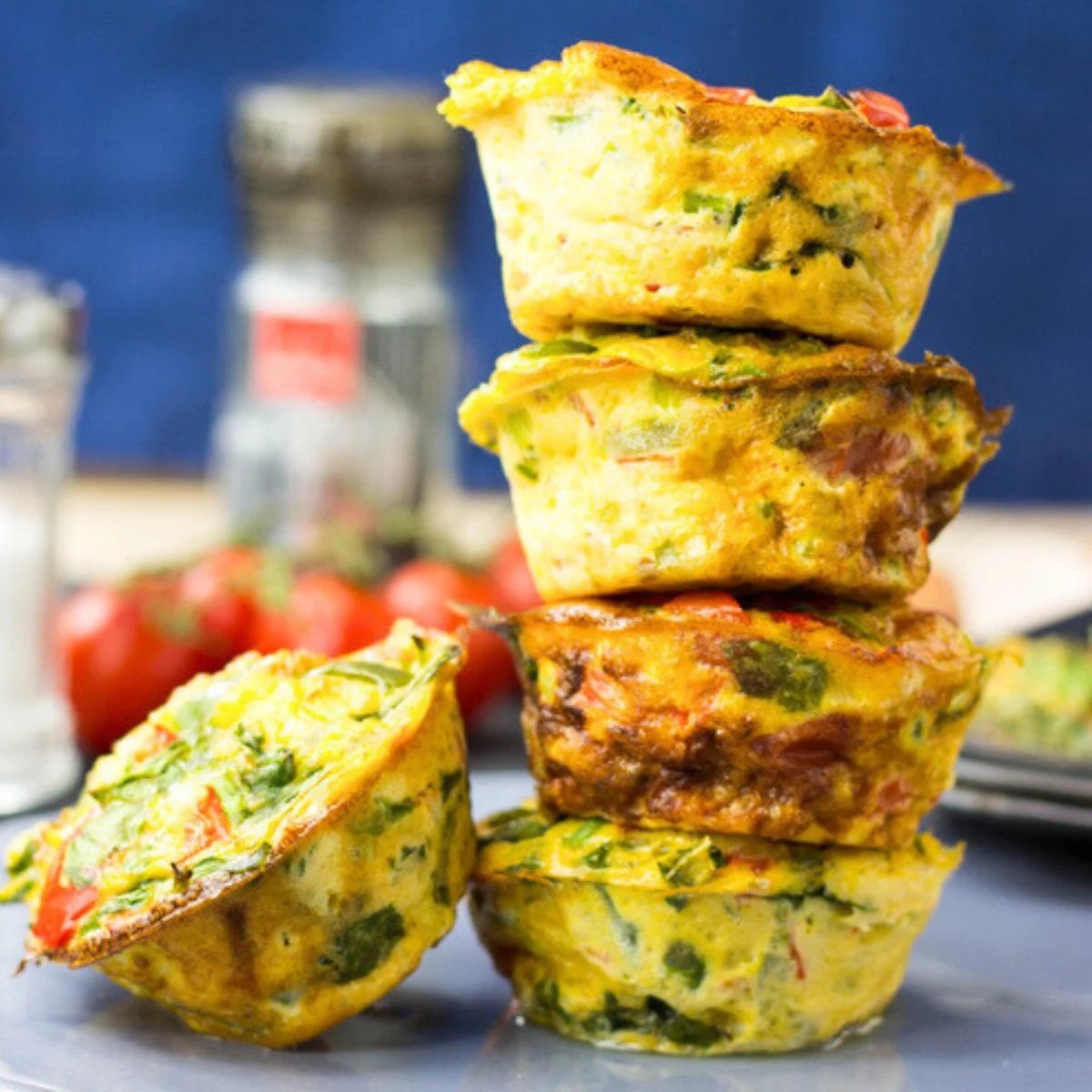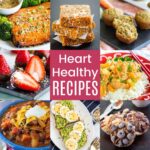Fuel your active life with delicious and effective high-protein, low-carb recipes! This comprehensive guide dives into a world of vibrant, energy-boosting meals designed to support your fitness goals. We’ll explore breakfast, lunch, dinner, and snack options, each meticulously crafted to maximize muscle recovery, optimize energy levels, and satisfy even the most demanding palates. From quick pre-workout snacks to hearty post-training dinners, you’ll discover a treasure trove of recipes that are as convenient as they are nutritious.
Learn to build a personalized meal plan tailored to your unique activity level and dietary needs. We’ll guide you through adapting recipes to accommodate various dietary restrictions, ensuring that everyone can enjoy the benefits of a high-protein, low-carb diet. Prepare to transform your relationship with food, discovering the power of delicious, healthy eating to fuel your active lifestyle.
High-Protein Snack Ideas
Fueling your active lifestyle requires strategic snacking to maintain energy levels and support muscle recovery. High-protein, low-carb snacks are ideal because they provide sustained energy without the blood sugar spikes and crashes associated with carbohydrate-heavy options. These snacks help prevent muscle breakdown and promote efficient repair after intense physical activity. The following recipes offer a variety of flavors and textures to keep your snacking interesting and effective.
Savory Snack Options
Choosing savory snacks can be a satisfying way to boost protein intake without relying on sugary treats. These options offer a balance of flavor and nutrients, perfect for those who prefer a less sweet approach to snacking.
Recipe 1: Hard-Boiled Eggs with Everything Bagel Seasoning
Simply hard-boil eggs (approximately 8 minutes for a medium-boiled egg). Once cooled, sprinkle generously with everything bagel seasoning for a burst of savory flavor. The creamy texture of the egg provides a satisfying mouthfeel, and the seasoning adds a complex layer of taste. This snack is rich in protein and easily portable.
Recipe 2: Avocado and Tuna Salad Lettuce Wraps
Combine canned tuna (drained), mashed avocado, a squeeze of lemon juice, and salt and pepper to taste. Spoon the mixture into crisp lettuce cups (such as romaine or butter lettuce) for a refreshing and protein-packed snack. The healthy fats in the avocado contribute to satiety, keeping hunger at bay longer.
Sweet Snack Options
Even those following a low-carb, high-protein diet can enjoy satisfyingly sweet snacks. These options provide a touch of sweetness without compromising your dietary goals.
Recipe 3: Greek Yogurt with Berries and Chia Seeds
Mix plain Greek yogurt (high in protein and low in carbs) with a handful of mixed berries (strawberries, blueberries, raspberries) and a tablespoon of chia seeds. The berries offer natural sweetness and antioxidants, while the chia seeds add fiber and omega-3 fatty acids. The creamy yogurt provides a luxurious texture.
Crunchy Snack Options
Crunchy snacks can satisfy cravings for texture and provide a satisfying bite. These options provide a satisfying crunch without compromising your nutritional goals.
Recipe 4: Celery Sticks with Almond Butter
Fill celery sticks with almond butter for a crunchy, satisfying snack. The combination of the crisp celery and the creamy almond butter offers a delightful contrast in textures and a good source of healthy fats and protein.
Recipe 5: Protein-Packed Trail Mix
Combine a mix of unsalted nuts (almonds, walnuts, pecans), pumpkin seeds, and a small amount of dark chocolate chips (for a touch of sweetness). This trail mix provides a satisfying crunch and a balanced mix of protein, healthy fats, and a small amount of carbohydrates.
Snack Timing for Optimal Results
Proper snack timing is crucial for maximizing the benefits of your high-protein, low-carb snacks. Consuming a protein-rich snack 30-60 minutes before a workout provides sustained energy. A post-workout snack within 30-60 minutes helps replenish glycogen stores and initiate muscle protein synthesis, facilitating recovery and muscle growth. Choosing the right snack at the right time optimizes energy levels and promotes efficient muscle recovery. The timing allows your body to utilize the nutrients effectively for both immediate energy needs and long-term muscle development.
Recipe Adaptations for Dietary Restrictions

Adapting high-protein, low-carb recipes to accommodate various dietary restrictions requires careful consideration of ingredient substitutions and their impact on the nutritional profile. Maintaining the desired macronutrient balance while satisfying specific dietary needs is key. This section details how three sample recipes can be modified for vegetarian, vegan, and gluten-free diets.
Recipe Adaptation Examples
The following table showcases adaptations for three hypothetical high-protein, low-carb recipes: a Creamy Pesto Chicken Salad, a Spicy Shrimp Scampi with Zucchini Noodles, and a Cauliflower Mash with Bacon. Each adaptation maintains the high-protein, low-carb focus while accommodating different dietary needs.
| Original Recipe | Vegetarian Adaptation | Vegan Adaptation | Gluten-Free Adaptation |
|---|---|---|---|
| Creamy Pesto Chicken Salad: Grilled chicken breast, pesto (basil, pine nuts, parmesan cheese, garlic, olive oil), mixed greens. | Creamy Pesto Tofu Salad: Firm or extra-firm tofu (pan-fried or baked until crispy), pesto (using sunflower seeds instead of pine nuts and nutritional yeast instead of parmesan), mixed greens. Nutritional yeast adds a cheesy flavor and boosts protein. | Creamy Pesto Chickpea Salad: Chickpeas (roasted for added texture), pesto (using sunflower seeds and omitting cheese), mixed greens. Chickpeas provide plant-based protein and fiber. | Creamy Pesto Chicken Salad (Gluten-Free): Grilled chicken breast, pesto (ensure all ingredients are gluten-free, such as gluten-free soy sauce if used), mixed greens. Carefully check pesto ingredients for gluten-containing additives. |
| Spicy Shrimp Scampi with Zucchini Noodles: Shrimp, zucchini noodles, garlic, olive oil, chili flakes, lemon juice. | Spicy Tofu Scampi with Zucchini Noodles: Firm or extra-firm tofu (cubed and pan-fried), zucchini noodles, garlic, olive oil, chili flakes, lemon juice. Tofu provides a comparable texture and protein source. | Spicy Tofu Scampi with Zucchini Noodles: Firm or extra-firm tofu (cubed and pan-fried), zucchini noodles, garlic, olive oil, chili flakes, lemon juice. This recipe is already vegan. | Spicy Shrimp Scampi with Zucchini Noodles (Gluten-Free): Shrimp, zucchini noodles, garlic, olive oil, chili flakes, lemon juice. This recipe is naturally gluten-free. |
| Cauliflower Mash with Bacon: Cauliflower, bacon, butter, heavy cream, salt, pepper. | Cauliflower Mash with Roasted Vegetables: Cauliflower, roasted vegetables (such as carrots, broccoli, or bell peppers), olive oil, herbs, spices. Roasted vegetables add flavor, color, and nutrients. | Vegan Cauliflower Mash: Cauliflower, nutritional yeast, olive oil, plant-based milk (e.g., almond or soy milk), garlic powder, onion powder. Nutritional yeast adds a cheesy flavor and protein. | Cauliflower Mash with Bacon (Gluten-Free): Cauliflower, bacon, butter, heavy cream, salt, pepper. This recipe is naturally gluten-free. |
Nutritional Impact of Adaptations
Each adaptation aims to maintain the high-protein, low-carb profile of the original recipe. For example, replacing chicken with tofu in the scampi maintains protein levels while adding a different flavor profile. Using chickpeas in the pesto salad increases fiber content, contributing to satiety. Substituting heavy cream with plant-based milk in the vegan cauliflower mash reduces fat content but might slightly alter the creaminess. Careful ingredient selection ensures that the adapted recipes continue to be nutritious and satisfy dietary needs. Always check nutritional labels to ensure accurate macronutrient counts after making substitutions.
Process of Recipe Modification
Modifying recipes to maintain a high-protein, low-carb profile while accommodating dietary restrictions involves a systematic approach. First, identify the key ingredients contributing to the protein and carbohydrate content. Then, explore suitable substitutions that maintain or improve the nutritional value while aligning with the dietary requirements. For example, replacing refined grains with cauliflower rice maintains a low-carb profile while adding nutrients. Finally, taste-test and adjust seasonings as needed to ensure the adapted recipe is palatable and satisfying. The key is to prioritize ingredients that provide high-quality protein and minimize added sugars and refined carbohydrates.
Embarking on a high-protein, low-carb journey doesn’t mean sacrificing taste or convenience. This guide has equipped you with the knowledge and recipes to create a sustainable, delicious, and effective eating plan that supports your active lifestyle. Remember to listen to your body, adjust portions based on your individual needs, and enjoy the process of fueling your body with nutritious and flavorful meals. The vibrant colors, textures, and aromas of these recipes will not only nourish your body but also delight your senses. Get ready to experience the transformative power of mindful eating!
Key Questions Answered
What are the best protein sources for a high-protein, low-carb diet?
Lean meats (chicken breast, turkey, fish), eggs, Greek yogurt, and protein powders are excellent choices.
How many carbs should I consume on a low-carb diet?
This varies depending on individual needs and activity levels. Consult a nutritionist or healthcare professional for personalized guidance.
Can I still eat fruits on a low-carb diet?
Yes, but in moderation. Berries are generally lower in carbs than other fruits.
What are some good low-carb vegetables?
Leafy greens (spinach, kale), broccoli, cauliflower, asparagus, and peppers are all excellent options.
How do I manage cravings on a low-carb diet?
Stay hydrated, increase healthy fat intake, and ensure adequate protein consumption to help curb cravings. Consider incorporating low-carb substitutes for your favorite treats.


